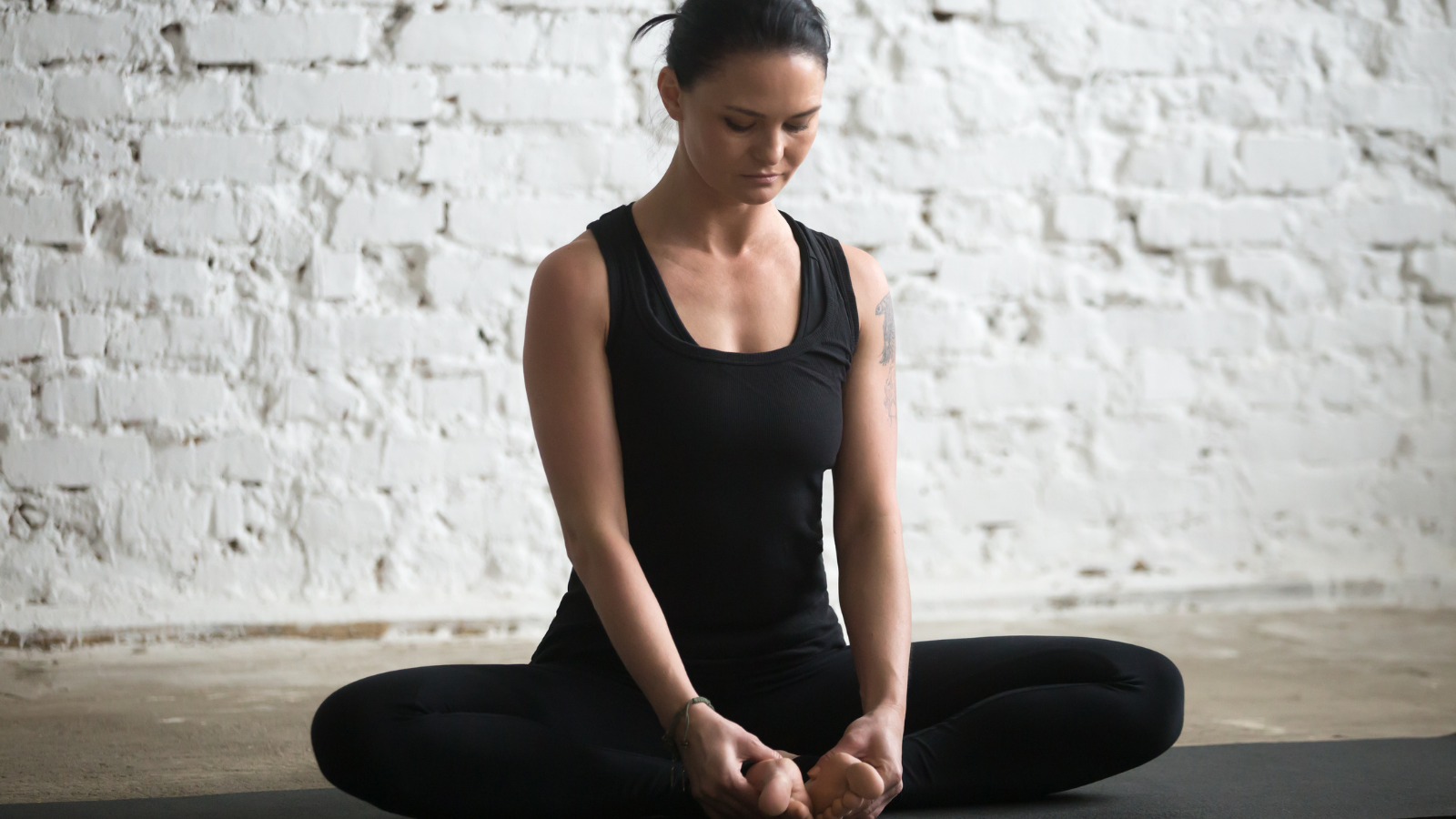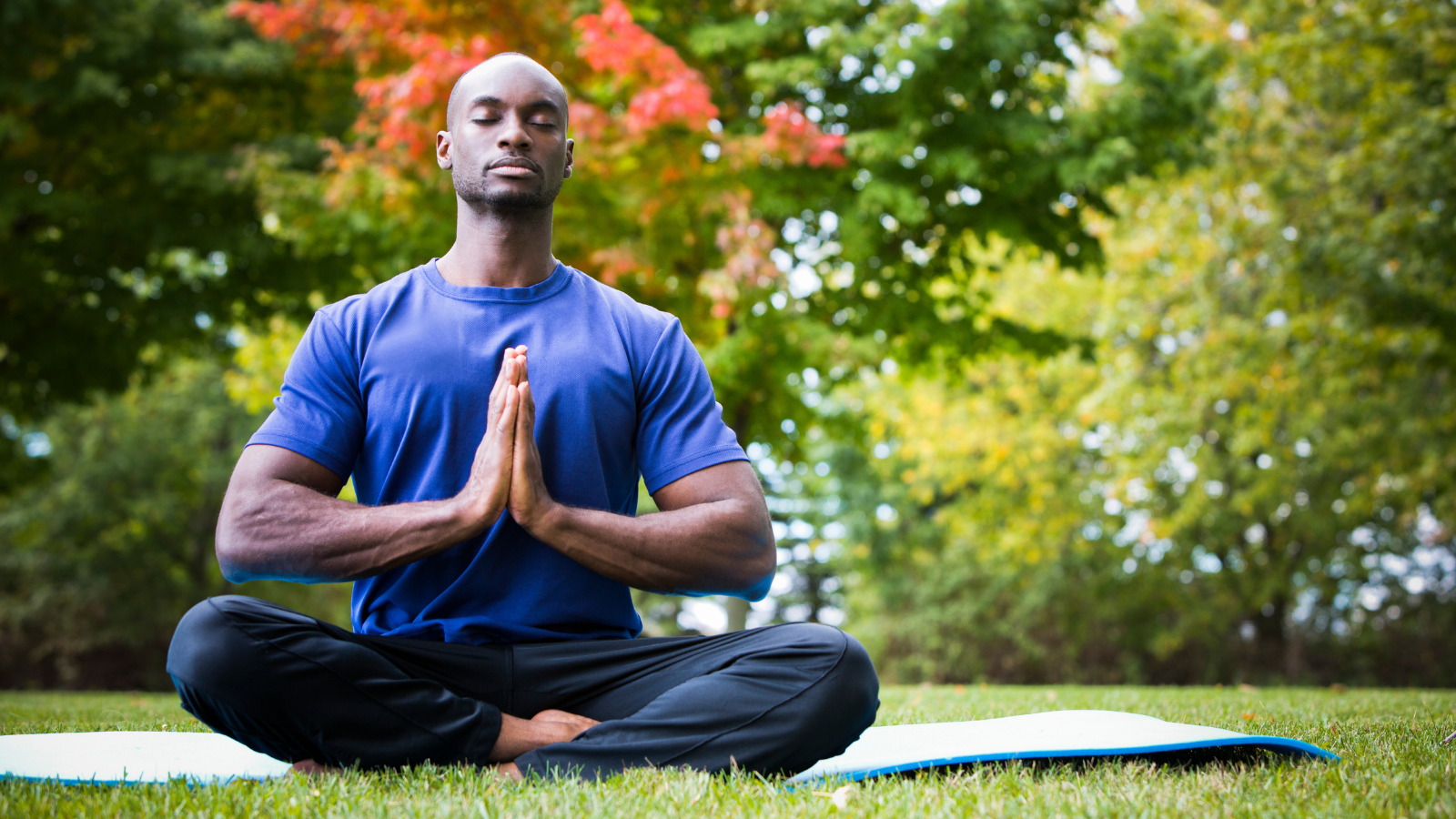Keys to Cultivating Self-Awareness
Research on the Benefits of Embodiment and Interoceptive Awareness

Article At A Glance
YogaU writer Lacey Ramirez shares the latest research supporting yoga practice as a proven tool to develop greater body awareness, interoception, and embodiment to improve overall mental and physical health and well-being. Included are yoga teaching tips to enhance embodiment and interoceptive awareness.
Have you ever had a “gut feeling” or “listened to your heart” when making a tough decision? Emerging research on interoception and embodiment shows there may be more to these expressions than scientists originally believed.
What is Interoception?

Interoception is the ability to detect bodily processes and changes, including physiological cues related to sleep, digestion, and movement. Researchers typically break down interoception into two distinct dimensions:
1) proprioception, which encompasses sensation related to the skin, muscles, and bones; and
2) visceroception refers to sensation from the inner organs (1).
Each of these forms of interoception contributes to our ability to sense our bodies as they react to and interact with the world around us.
Zeroing in on The Origin of Emotions
The ability to sense interoceptively, which the authors call “interoceptive awareness”, goes beyond the physical dimension of the body in that it relates to the way emotions and feelings manifest in subtle physiological changes. For example, we may experience “butterflies in the stomach” when we are nervous or feel “a lump in the throat” when we want to cry.
In many ways, interoceptive awareness is like a sixth sense in that it relates to sensations that are not visible, tangible, or detectable to a close observer. Thus, the authors suggest interoception represents the bridge between the body’s physiological processes and the conscious awareness of the mind.
In other words, interoception underlies the mind-body connection we speak about so often in yoga.
We are constantly taking in information from both inside and outside our bodies, but some are better able to sense this input than others. This means that interoceptive awareness exists on a spectrum. For example, research on heart rate sensing shows that some people are sensitive enough to detect their own heartbeat at any given moment, while most people cannot.
Yoga for Embodiment: The Importance of Sensations

We talk a lot about embodiment in yoga. But what does embodiment truly mean, and how does it relate to interoception?
Researchers now believe that embodiment relates to the visceral, felt sense of inhabiting the body. The sensations that arise from sensing the body “are intrinsically tied to life, represent relevant signals for survival and well-being, and underlie mood, emotional state, and fundamental cognitive processes,” note researchers Herbert and Pollatos. Therefore, they describe interoception as the foundation of embodiment as awareness of our internal state, which is at the heart of our ability to sense the body.
The Many Benefits of Embodiment and Interoceptive Awareness

1. Self-Regulation of the Physical Body
Both embodiment and interoceptive awareness are associated with many benefits related to awareness and regulation of our internal state.
By tuning in to interoceptive stimuli, including thirst, itch, heart rate, hunger, satiety, and feeling the need to breathe, we can better sense our physiological needs at any given moment.
These cues are crucial to maintaining homeostasis or regulating the internal physical state of the body, which is fundamental to being alive.
2. Emotional Awareness
Increasingly, researchers link interoceptive awareness to emotional awareness and processing.
At a fundamental level, researchers now believe, emotions can be broken down into bodily processes that are felt and perceived.
Bodily sensations can both reflect and influence our mood and emotional state. Neuroscientist Antonio Damasio refers to this as the somatic marker hypothesis. According to this hypothesis, conscious awareness of emotional feelings can arise from bodily states (somatic markers) such as “gut feelings”, and these feelings, in turn, can guide us in making complex decisions.
3. Self-awareness and Consciousness
Sensing emotional states and interoceptive stimuli are closely tied to self-awareness awareness and our sense of self. Damasio goes a step further to suggest that embodied processes form the basis of consciousness. He suggests that a continuous stream of bodily signals combine to give rise to consciousness. In other words, our ability to sense our bodies and the world around us is said to be the basis of what it means to be alive and aware. 
4. Perception of Time
Some researchers have even linked interoceptive awareness to time perception, theorizing emotions associated with changes in physiological state underlie our perception of time. For example, our ability to perceive light and sense the hormonal shifts associated with circadian rhythm may be at the heart of our ability to tell the difference between night and day.
Disturbances of Embodiment and Interoceptive Awareness
But what happens to people for whom interoceptive awareness and embodiment don’t come so easily?
Growing evidence suggests that a range of mental health conditions are associated with disturbances in embodiment. Being disembodied may influence conditions that affect our sense of self, including schizophrenia and depression.
It may also affect body image or awareness-related conditions, such as body dysmorphic disorder or eating disorder.

How Yoga Can Help Build Embodiment and Interoceptive Awareness
The good news for anyone who struggles with tuning in either on or off the mat is that interoceptive awareness isn’t a fixed feature.
We can be trained to better understand what’s happening inside simply by tuning in to our internal state. Much of the research on this has focused on heart rate sensing, and initial evidence suggests we can indeed train ourselves to improve our perception of our own heartbeat.
This would mean that we are capable of enhancing other interoceptive abilities as well.
Research is beginning to suggest that yoga and mindfulness practices may play a key role in enhancing interoception. For example, a small study that compared the brain structure of 14 North American yoga practitioners to individually matched controls showed the yoga practitioners had increased left intrainsular white matter integrity, which the researchers say suggests enhanced integration of stimuli related to pain (2).
Yoga practitioners in this study were also more likely than their matched controls to use strategies involving interoceptive awareness to tolerate pain.
Another study used neuroimaging to examine the effect of mindfulness training on emotional regulation and interoception among military personnel (3).
The researchers randomized study participants either to 20 hours of mindfulness-based fitness training or to their standard military training and measured changes in activation of certain regions of the brain at baseline and after their training.
The results pointed to an enhanced ability to process negative interoceptive stimuli, such as pain signaling, in the group that participated in mindfulness training compared to the control group.
Still, research on the impact of yoga, mindfulness, and meditation on interoceptive awareness and embodiment is just in its beginning phases, and how to objectively measure awareness of the internal body state has yet to be standardized.

Tips for Teaching Yoga to Enhance Embodiment and Interoceptive Awareness
To teach yoga in a way that encourages interoceptive awareness, trauma-informed principles are key. Facilitating embodiment and encouraging interoceptive awareness are at the heart of trauma-informed yoga. Dr. Bessel van der Kolk makes frequent mention of interoception as a healing benefit of mind-body practices in his landmark book on the brain, mind, body, and trauma, The Body Keeps the Score:
“Agency starts with what scientists call interoception, our awareness of our subtle sensory, body-based feelings: the greater that awareness, the greater our potential to control our lives. Knowing what we feel is the first step to knowing why we feel that way. If we are aware of the constant changes in our inner and outer environment, we can mobilize to manage them.”
This style of teaching calls for an exploration of the body that goes far beyond a few moments of breath awareness at the beginning of class. In addition to centering, teachers can weave mind-body awareness throughout the practice. For example, teachers can guide students through a body scan before Savasana or lead a meditation that encourages students to notice their thoughts.

This can also translate to cultivating a practice that places students in the driver’s seat of their own experience. Providing options for students to move – or rest – can empower them to adapt their practice to the needs of their bodies at the moment.
Language is also key to teaching yoga for interoceptive awareness, and cueing students to “notice,” “explore,” or “investigate” subtle feelings in their bodies in any given yoga posture can encourage students to approach bodily sensations with openness and curiosity.
Summary
Embodiment and interoception are intricately connected concepts that relate to our ability to sense the fluctuation of sensations in the body.
Research on the effect of mind-body practices on interoception is still in its beginning stages, but yoga holds promise as an accessible way to cultivate embodiment and build interoceptive awareness.
Also, read...
7 Yoga Teaching Tips I Wish I’d Learned Sooner
Apr 10 – Jennie Cohen, E-RYT 500, YACEP
Related courses
Keys to Finding Inner Strength: A Yogic Wisdom Path to Developing Greater Resilience
With Arielle Schwartz
Somatic Yoga for Fascial Unwinding
With James Knight

Lacey Ramirez writes for YogaUOnline and is an ERYT-200 yoga teacher, global health researcher, and writer based in St. Louis. Through her work, she seeks to make yoga accessible, inclusive, and equitable.
Lacey discovered yoga as a tool for centering during her years as a competitive runner. Since then, yoga has served as a way to connect with her body throughout her experience of pregnancy and parenthood. She teaches because she hopes others can use this sacred practice for calming, healing, and transformation.
As a yoga teacher, Lacey specializes in teaching restorative, Yin, prenatal, and trauma-informed Vinyasa yoga. She has also completed birth doula and prenatal/postnatal barre certifications and trainings. Additionally, she holds a Masters of Science in Global Health and Population from Harvard T.H. Chan School of Public Health. To learn more and connect, visit her website laceyramirez.com
References:
1) Herbert, B. M., & Pollatos, O. (2012). The body in the mind: on the relationship between interoception and embodiment. Topics in cognitive science, 4(4), 692–704. https://doi.org/10.1111/j.1756-8765.2012.01189.x
2) Villemure, C., Ceko, M., Cotton, V. A., and Bushnell, M. C. (2014). Insular cortex mediates increased pain tolerance in yoga practitioners. Cerebral Cortex, 24, 2732–2740. doi: 10.1093/cercor/bht124
3) Haase, L., Thom, N. J., Shukla, A., Davenport, P. W., Simmons, A. N., Stanley, E. A., Paulus, M. P., & Johnson, D. C. (2016). Mindfulness-based training attenuates insula response to an aversive interoceptive challenge. Social cognitive and affective neuroscience, 11(1), 182–190. https://doi.org/10.1093/scan/nsu042
Recent articles
Empowered Aging: An Interview with Yoga Teacher Ellen Saltonstall
Apr 17 – Sarah Bell ERYT-500, YACEP
4 Yoga Poses to Strengthen the 4 Muscles of the Rotator Cuff
Apr 15 – Leah Sugerman, E-RYT 500, YACEP
Exploring the Link Between Sleep and Anxiety
Apr 13 – Katie Potocnik Medina, LCSW
Categories
Upcoming courses
Keys to Finding Inner Strength: A Yogic Wisdom Path to Developing Greater Resilience
With Arielle Schwartz
FREE DOWNLOAD!
Recent articles
Almost there...
Sorry, we couldn't find anything...
Yoga and Healthy Aging
Empowered Aging: An Interview with Yoga Teacher Ellen Saltonstall
YogaUOnline: We are delighted today to be here with Ellen Saltonstall to discuss her…
Apr 17 – Sarah Bell ERYT-500, YACEP
Anatomy
4 Yoga Poses to Strengthen the 4 Muscles of the Rotator Cuff
The shoulder’s rotator cuff is a group of four separate muscles that work together…
Apr 15 – Leah Sugerman, E-RYT 500, YACEP
Insomnia
Exploring the Link Between Sleep and Anxiety
As a clinical social worker with years of experience working with adolescents and families,…
Apr 13 – Katie Potocnik Medina, LCSW


